
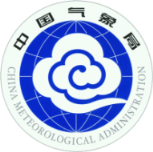

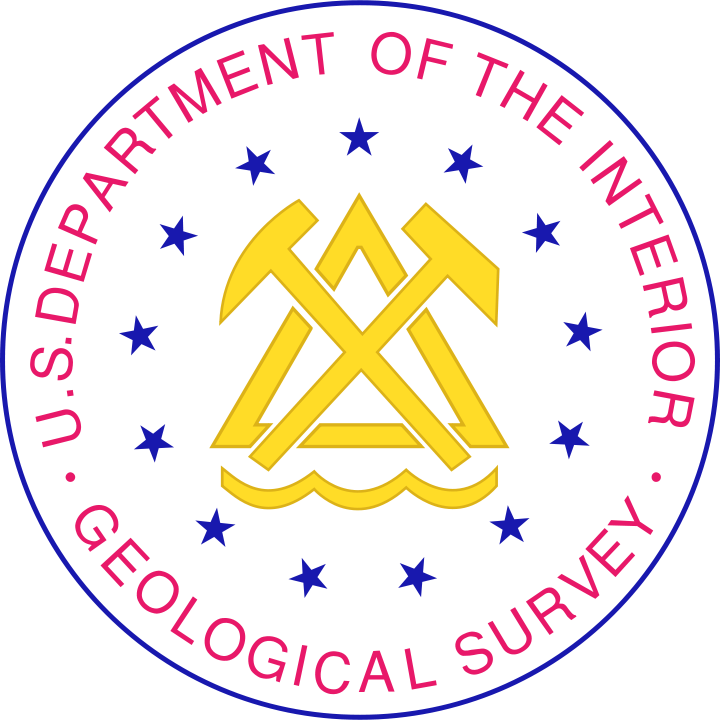


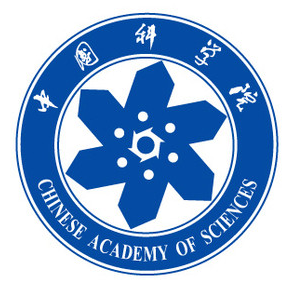
In the recent years, significant efforts have been made to promote and develop lunar calibration activities within GSICS and CEOS WGCV IVOS. In December 2014 experts from 14 agencies and departments attended the joint GSICS – IVOS Lunar Calibration Workshop organized by EUMETSAT in collaboration with USGS, CNES and NASA. In total it represented potentially more than 25 instruments capable of observing the Moon, covering a spectral range from about 0.4μm to 2.3μm. One of the major achievements of the workshop was to work on a common lunar irradiance model: the GSICS Implementation of the ROLO (GIRO) model. The GIRO was endorsed as the established publicly-available reference for lunar calibration, directly traceable to the USGS ROLO model.
More recently, many initiatives were undertaken by the members of the Lunar Calibration Community with for instance dedicated lunar measurement campaigns, developments of radiance models, or new algorithms to develop new lunar inter-calibration products.
In order to pursue the efforts of sharing knowledge and expertise on lunar calibration, the Second Joint GSICS/IVOS Lunar Calibration Workshop will be hosted by the China Meteorological Administration (CMA) in Xi’an, China, November 13-16, 2017.
This workshop is being organized by CMA, Xi'an Institute of Optics and Precision Mechanics (XIOPM), Chinese Academy of Sciences (CAS), EUMETSAT, USGS and NOAA.
The main objectives of the workshop are:
This workshop will lead to an updated assessment of the current lunar observation dataset that can either support refining the accuracy of the current version of the ROLO/GIRO or be part of the GSICS Lunar Observation Dataset (GLOD). It will also contribute to defining recommendations or methodologies to compare and inter-calibrate instruments using the Moon. Finally it is intending to provide more insight on the use of lunar observations in satellite mission Cal/Val plans and for sensor monitoring activities.
A series of preparatory activities is currently being defined for which participants are expected to present their results for discussion at the workshop. A list of topics is available on the GSICS Development Wiki topic dedicated to the 2017 Lunar Calibration Workshop ( details here). Presentations about the latest progress on lunar measurements and Moon observations, using the ROLO/GIRO, inter-calibration using the Moon and alternative lunar methods and applications are also welcome. The workshop aims at triggering activities to enhance the current lunar calibration capabilities, while strengthening further the interactions between the members of the Lunar Calibration Community.
Two web meetings were organized in order to define the topics that will be covered by the workshop. All information and documentation regarding the preparation of the workshop, together with the contact details of the organizers can be found under the GSICS Lunar Calibration wiki topic ( details here). Additional web meetings will be organized in preparation of the workshop. Announcements will be made through the GSICS Developers mailing list.






Reminder: This is only a draft and it may evolve depending on the final participations.
Date: November 13th~16th, 2017
Address:No. 60, Boshi Road, Hi-Tech Zone, Xi'an, Shaanxi, China (西安高新区博士路60号)
| Mon am | Topic : Measurements and Moon Observations |
||||
|---|---|---|---|---|---|
| Chair: Scott Hu | |||||
| 08:45 | Coffee and Registration | ||||
| 09:00 | Peng ZHANG | CMA | Opening | 1a | 20 min |
| 09:20 | XIOPM | Welcome | 1b | 20 min | |
| 09:40 | Agenda, announcements | 1c | 10 min | ||
| 09:50 | Peng ZHANG | CMA | Achievement from the project "Solar bands calibration technique based on Lunar radiance source” | 1d | 20 min |
| 10:10 | Xiuqing HU | CMA | Ground-based Lunar observation and results in Lijiang, China | 1e | 20 min |
| 10:30 | Coffee break | 30 min | |||
| 11:00 | Yang LUO | CIOMP | Hyperspectral lunar photometer development and measurement | 1f | 20 min |
| 11:20 | Geng ZHANG | XIOMP | Moon Observation with an FTIR Imaging Spectrometer: Recent Progress and Beyond | 1g | 20 min |
| 11:40 | Marc Bouvet | ESA | (to be checked) | 1i | 20 min |
| 12:00 | All | All | Discussion | 1j | 30 min |
| 12:30 | Lunch Break | 1 hour | |||
| Mon pm | Topic : Measurements and Moon Observations |
||||
| Chair: Scott Hu | |||||
| 13:30 | Matthijs Krijger / Ralph Snel |
ESS | SCIAMACHY lunar measurements and radiometric accuracy | 1k | 20 min |
| 13:50 | Matthijs Krijger / Ralph Snel |
ESS | GOME-2 lunar measurements | 1l | 20 min |
| 14:10 | Lei YANG | CMA | Moon prediction, registration and navigation for FY satellites | 1m | 20 min |
| 14:30 | All | All | Discussion | 1n | 30 min |
| 15:00 | Coffee break | 30 min | |||
| 15:30 | Tom Stone | USGS | Status of the CLARREO and ARCSTONE projects | 1o | 20 min |
| 15:50 | Benyong YANG | AIOFM | Characterization, calibration and traceability for Lunar observation instruments | 1p | 20 min |
| 16:10 | Feng JIANG | STIP | Lunar observation plan based on SI-traceable demonstration instrument development | 1q | 20 min |
| 16:30 | All | All | Discussion | 1r | 30 min |
| 17:00 | Fangfang Yu | NOAA | Dataset cataloging | 1s | 20 min |
| 17:20 | Sebastien Wagner | EUMETSAT | Evolution of the GLOD | 1t | 10 min |
| 17:30 | All | All | Discussion | 1u | 30 min |
| 18:00 | End of session | ||||
| 18:30 | Reception | 1h30min | |||
| 20:00 | END | ||||
| Tues am | Topic : Using the ROLO/GIRO |
||||
| Chair: Tom Stone | |||||
| 08:30 | Tom Stone | USGS | ROLO and data preparation | 2a | 10 min |
| 08:40 | Truman Wilson | NASA | Lunar data preparation for MODIS | 2b | 15 min |
| 08:55 | Hongda Chen | NASA | Lunar data preparation for VIIRS | 2c | 15 min |
| 09:10 | Jack Xiong | NASA | Using lunar calibration for MODIS / VIIRS | 2d | 20 min |
| 09:30 | Toru Kouyama | AIST | Lunar data preparation for ASTER | 2e | 15 min |
| 09:45 | Ronghua WU | CMA | Lunar data preparation for MERSI/Tansat | 2f | 15 min |
| 10:00 | Stefan Adriaensen | VITO | Lunar data preparation for ProbaV | 2g | 15 min |
| 10:15 | Coffee break | 20 min | |||
| 10:35 | All | All | Discussion | 20 min | |
| 10:55 | Lin CHEN | CMA | Lunar data preparation for FY-2 | 2h | 15 min |
| 11:10 | Sebastien Wagner | EUMETSAT | Lunar data preparation for SEVIRI | 2i | 15 min |
| 11:25 | Tae-Hyeong Oh | KMA | Lunar data preparation for COMS | 2j | 15 min |
| 11:40 | Yoshihiko Okamura | JAXA | Lunar data preparation for GCOM-C | 2k | 15 min |
| 11:55 | Masaya Takahashi | JMA | Lunar data preparation for for AHI (+MTSAT-2?) | 2l | 15 min |
| 12:10 | Fangfang Yu | NOAA | Lunar data preparation for ABI (+GOES15?) | 2m | 15 min |
| 12:25 | All | All | Discussion | 2n | 20 min |
| 12:45 | Lunch Break | 1 hour | |||
| Tues pm | Topic : Lunar Model Development |
||||
| Chair: Tom Stone | |||||
| 13:45 | Matthijs Krijger | ESS | Preparation of the data for GOME-2 | 2o | 15 min |
| 14:00 | All | All | Discussion (on data preparation) | 2p | 20 min |
| 14:20 | Tom Stone | USGS | Current status of the ROLO and future developments | 3a | 15 min |
| 14:35 | Sebastien Wagner | EUMETSAT | GIRO benchmark | 3b | 15 min |
| 14:50 | Yang WANG | CIOMP | Comparison of the Lunar Model Using the Hyper-spectral imager observations | 3c | 20 min |
| 15:10 | Lu ZHANG | CMA | A novel hyperspectral lunar irradiance model based on ROLO and mean equigonal albedo | 3d | 20 min |
| 15:30 | All | All | Discussion (on data preparation) | 3e | 30 min |
| 16:00 | Visit of XIOPM facility | 2 hours | |||
| 18:00 | END | ||||
| Wed am | Topic : Lunar Model Development |
||||
| Chair: Tom Stone / Sebastien Wagner | |||||
| 08:30 | Toru Kouyama | AIST | SELENE | 3f | 20 min |
| 08:50 | Lu ZHANG | CMA | New Lunar model establishment based SELENE/SP observation with incorporated into lunar DEM data | 3g | 20 min |
| 09:10 | Yunzhao WU | CAS | A New Lunar Radiometric Model and Its Irradiance Based on China’s Lunar Orbiter and in situ Data | 3h | 20 min |
| 09:30 | Fangfang Yu / Xi Shao |
NOAA | Progress on the development of a radiance model for ABI | 3i | 20 min |
| 09:50 | All | All | Discussion | 3j | 30 min |
| 10:20 | Coffee break | 20 min | |||
Topic : Inter-calibration and inter-band calibration |
|||||
| Chair: Sebastien Wagner | |||||
| 10:40 | Sebastien Wagner | EUMETSAT | Inter-calibration scheme using the Moon and current issues + old results using MODIS as a reference | 4a | 20 min |
| 11:00 | Jack Xiong | NASA | Moving from MODIS to VIIRS as a new reference for inter-calibration | 4b | 20 min |
| 11:20 | Masaya Takahashi | JMA | Inter-calibration of AHI with MODIS | 4c | 20 min |
| 11:40 | Jack Xiong | NASA | Alternative approaches for cross comparisons between instruments | 4d | 20 min |
| 12:00 | Lu ZHANG | CMA | Inter-calibration using the Moon to bridge instruments with different relative spectral responses(RSRs) in reflective solar bands(RSB) | 4e | 20 min |
| 12:20 | Lunch Break | 1 hour | |||
| Wed pm | Topic : Inter-calibration and inter-band calibration |
||||
| Chair: Sebastien Wagner | |||||
| 13:20 | Stefan Adriaensen | VITO | Inter-band calibration with PROBA-V | 4f | 20 min |
| 13:40 | All | All | Discussion | 4g | 30 min |
Topic : Alternative uses of lunar measurements |
|||||
| Chair: Fred Wu | |||||
| 14:10 | Fred Wu | NOAA | Introduction to the session | 5a | 10 min |
| 14:20 | Xi (Sean) Shao | NOAA | MTF of ABI, AHI, FY-2, MI, and SEVIRI | 5b | 30 min |
| 14:50 | Claude Ledez / Sebastien Wagner |
EUMETSAT | MTF evaluation of Meteosat-9 SEVIRI using Lunar observations + results on the ABI + AHI | 5c | 15 min |
| 15:05 | colleague / Masaya Takahashi |
JMA | MTF evaluation of AHI using lunar observations | 5d | 15 min |
| 14:50 | Lin CHEN | CMA | MTF evaluation of FY-2 | 5e | 15 min |
| 15:05 | Min MIN | CMA | MTF evaluation of MERSI using Lunar observations | 5f | 15 min |
| 15:20 | Stefan Adriaensen | VITO | MTF evaluation of Proba-V | 5g | 15 min |
| 15:35 | Coffee break | 30 min | |||
| 16:05 | All | All | Discussion | 5h | 45 min |
| 16:50 | Seongick Cho | KIOST | GOCI-II MTF | 5i | 20 min |
| 17:10 | Toru Kouyama | AIST | Lunar Observation Activities with a Small Satellite and a Planetary Exploration Satellite | 5j | 20 min |
| 17:30 | END | ||||
| Thurs am | Topic : Alternative uses of lunar measurements |
||||
| Chair: Fred Wu | |||||
| 09:00 | Jack Xiong | NASA | MODIS PC bands optical leak characterisation using lunar observations | 5k | 20 min |
| 09:20 | Wilson Truman | NASA | Electronic x-talk characterisation using lunar observations for MODIS and VIIRS | 5l | 20 min |
| 09:40 | Fangfang Yu | NASA | Ghost effects/ X-talk characterisation using Moon observations from ABI (?) | 5m | 20 min |
| 10:00 | Likun Wang | NASA | Using lunar observations from CrIS for band-to-band co-registration check and radiometric calibration stability monitoring | 5n | 20 min |
| 10:20 | Coffee break | 30 min | |||
| 10:50 | Songyan GU | CMA | Lunar calibration consideration for FY-3 Microwave instruments | 5o | 20 min |
| 11:10 | All | All | Discussion | 5p | 1 hour |
| 12:10 | Lunch Break | 1 hour | |||
Topic : Conclusion and way forward |
|||||
| Chair: TBC | |||||
| 13:10 | All | All | Discussion - Establishing new requirements on the ROLO/GIRO application | 6a | 20 min |
| 13:30 | All | All | Discussion - Establishing new requirements on lunar measurements | 6b | 20 min |
| 13:50 | All | All | Discussion - Next steps for inter-calibration | 6c | 20 min |
| 14:10 | All | All | Discussion - Next steps for alternative methods (radiance models/MTF/other irradiance models) | 6d | 20 min |
| 14:30 | All | All | General discussion | 6e | 20 min |
| 14:50 | Sebastien Wagner | EUMETSAT | Review of recommendations/actions | 6f | 20 min |
| Scott Hu / local host |
CMA/XIOPM | 6g | |||
| 14:50 | Peng ZHANG | CMA | Summary and future activities at CMA in collaboration with the Chinese Academy of Science | 6h | 30 min |
| 15:20 | END | ||||

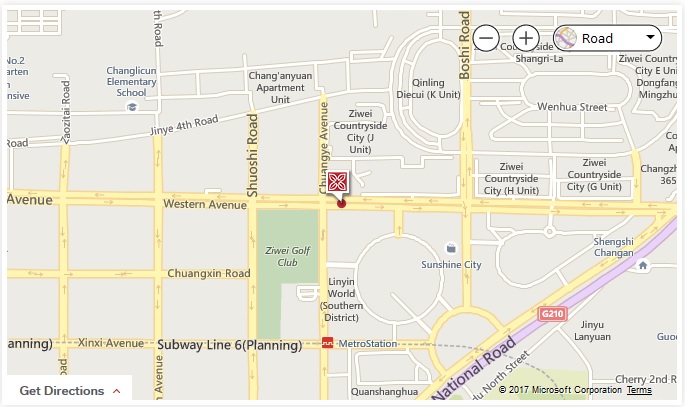
Xi'an is the cradle of Chinese civilization and the center of prehistory culture. As it's the capital of 13 ancient dynasties in China, which could date back to 1200 years ago, and the starting point ot the Silk Road, Xi'an is blessed with numerous marvelous historical and cultural relics. It is honored as the World Historic City by the UNESCO in 1981.
Not sure where to embark on your exploring in Xi'an? Don't worry. We'll get you covered with all the best and highlights of Xi'an.
Follow us to uncover the Imperial Burial Culture of Ancient China : the world-famous Terracotta Warriors; the Hanyangling Museum, whose pits are covered over with glass for your walking on; the Qianling Mausoleum, joint tomb of the the Tang Dynasty Emperor Gaozong and the only female Empress Wu Zetian.
 |
 |
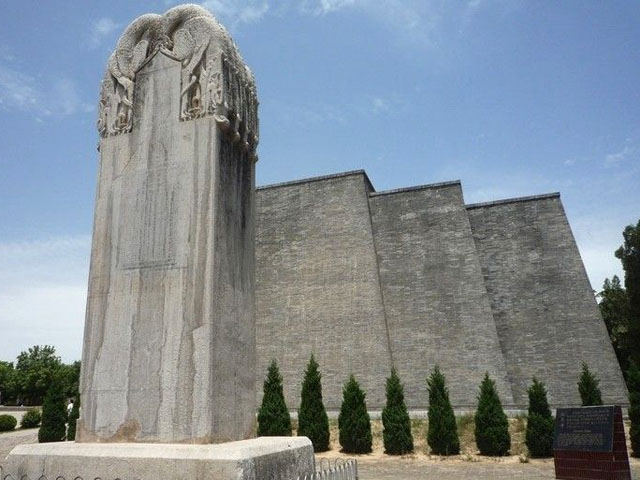 |
| Terracotta Warriors Army Standby | Underground Exhibition Hall Hanyangling Museum |
Blank Tablet Qianling Mausoleum |
Indulging yourself in the fabulous Tang Dynasty Show and Jiaozi Banquet, strolling or cycling on the best-preserved existing Ancient City Wall, and visiting the Buddhist temple - Big Wild Goose Pagoda.
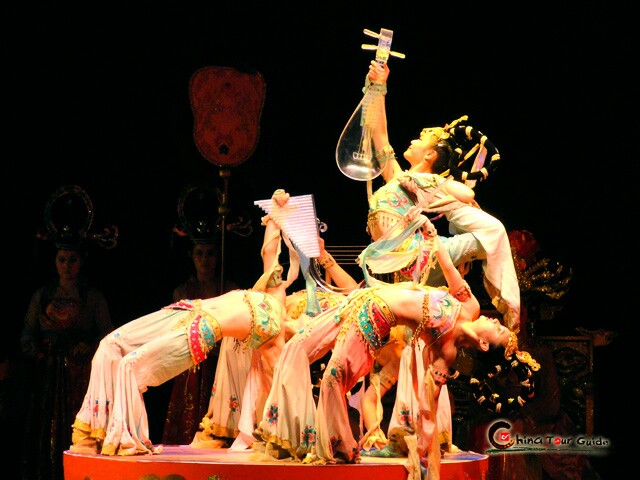 |
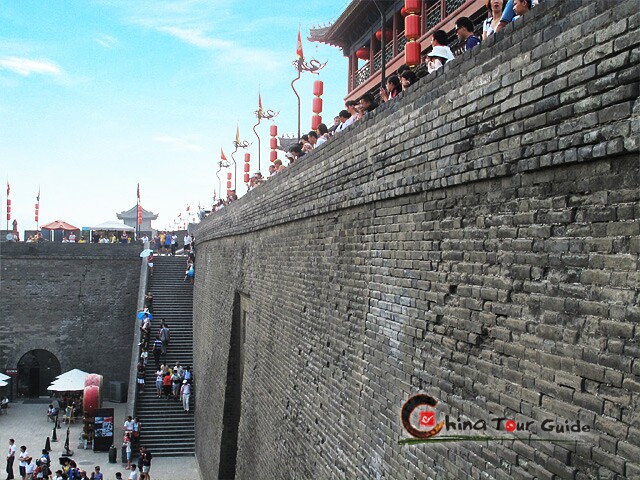 |
 |
| Dancing Girls Tang Dynasty Show |
Ancient City Wall Profile | Big Wild Goose Pagoda |
Enjoying the breathtaking landscape with extension to precipitous Mt. Huashan, which is one of the Five Great Mountains of China, and hitting on the spectacular view of Hukou Waterfall on the Yellow River.
 |
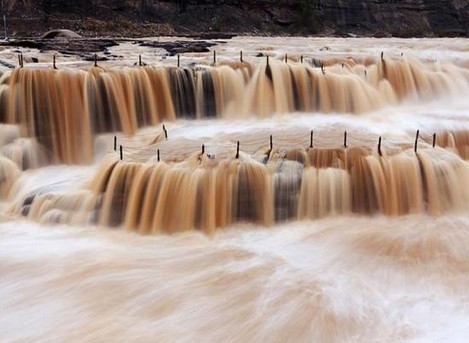 |
|
| Snaked Narrow Road on Mt. Huashan Peak |
Stunning View of Hukou Waterfall |
Participants can take flight to Xi'an Xianyang international airport(西安咸阳国际机场), or transfer at Beijing or Shanghai by air (about 2 hours from Beijing and about 3 hours from Shanghai).

|

|
| guide of international arrival | guide of international departure |
Participants can get to Xi'an by high-speed trains (about 5 hours from Beijing and about 7.5 hours from Shanghai). More detailed information could be get at the railway stations or on the web site (e.g. Ctrip).
The temperature in November is between 3 °C and 12 °C. The averaged precipitation in October is about 24 mm.
The standard domestic power supply in China is 220 V AC at 50 Hz. The standard sockets are two parallel lines and three lines as shown on the following photo.

The unit of Chinese currency is RMB (or CNY). The exchange rate is subject to market fluctuations. One US dollar is equivalent to approximately 6.74 RMB as of July 28, 2017. Major credit cards including VISA, MasterCard, and American Express are accepted at some hotels, department stores and restaurants.
Tipping is NOT a part of Chinese custom. No tipping is expected unless you are provided with extra service. It is not necessary to tip a taxi driver unless he/she assists with luggage or provides extra service.
No responsibility can be assured for any kind of personal accidents, sickness, theft, or property damage suffered by conference participants. Participants are advised to arrange whatever insurance they consider it necessary.
China is eight hours ahead of Greenwich Meantime. Typical business hours in government and private offices are from 8:00 to 17:00 and closed on Saturday & Sunday. Most shops and banks are open from 9:00 to 19:00 or later, and open seven days a week.
| Name | Organization |
|---|
You are not authorized to visit this page.
| FamilyName | MiddleName | FirstName | Gender | BirthDate | BirthPlace | Nationality | Passport | Country | IssueDate | Expiration | VisaInfo | Address | Tel | Fax | Organization | Position | Title | Arrival | Departure | flightInfo | Attendance | Presentation | Abstract | NeedReservation | subTime |
|---|